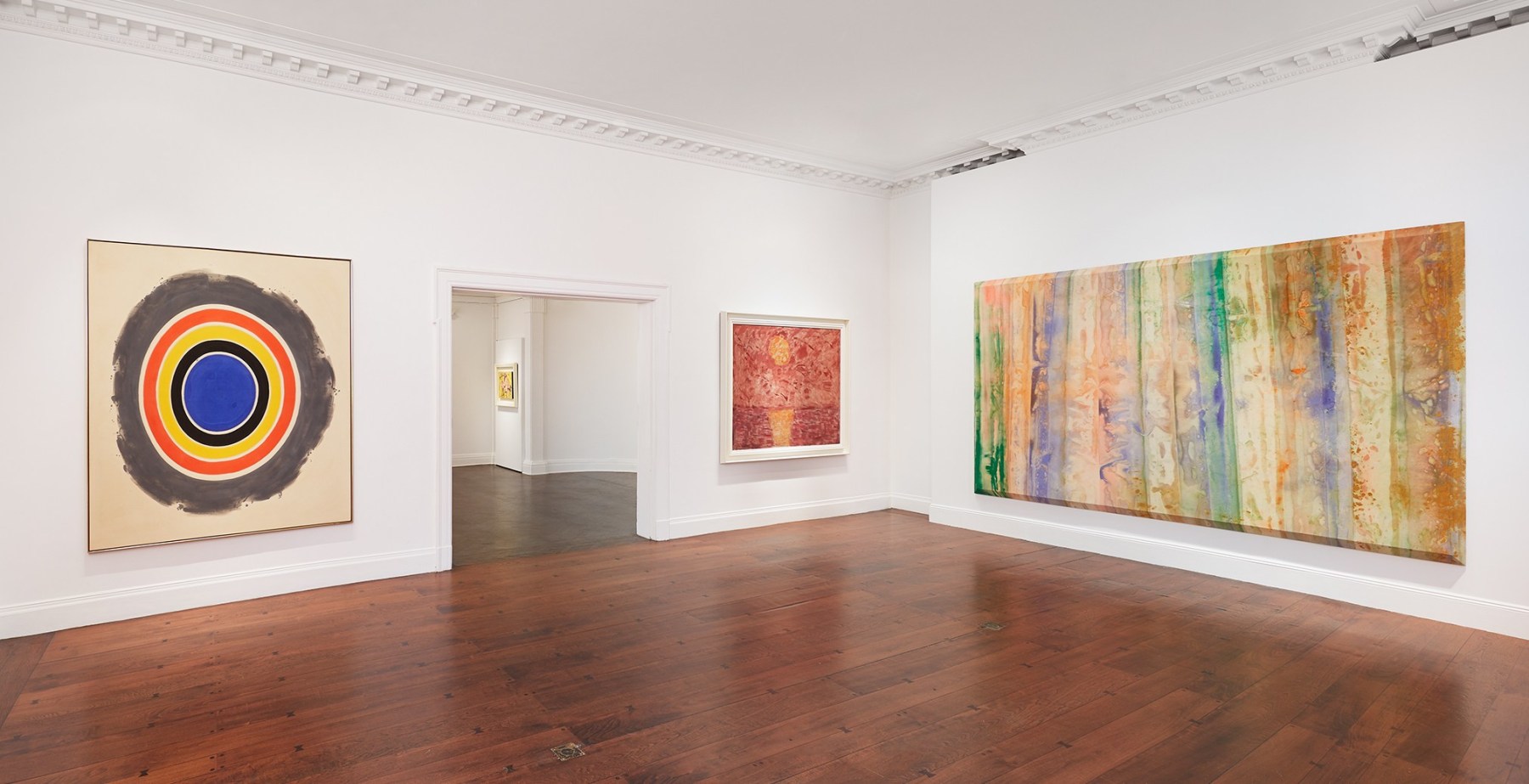Milton Avery
Hot Moon
Milton Avery
“I try to construct a picture in which shapes, spaces, colors, form a set of unique relationships, independent of subject matter. At the same time, I try to capture and translate the excitement and emotion aroused in me by the impact with the original idea.”
- MILTON AVERY
Deeply inspired by the simplified forms and non-naturalistic colors of Pablo Picasso, Georges Braque, and Henri Matisse, Milton Avery painted the seemingly simple world around him—from his wife Sally and daughter March to the seaside where he spent his summers—in rich hues and reductive forms that became influential for the artists of Abstract Expressionism.
Hot Moon (1958), belonging to Avery's significant late period, is a prime example of the lyric grace, utter calm, and unparalleled use of color that has come to define Avery's output. Dominated by a warmth that radiates out of the picture plane, both sky and sea share hot pink and rusty red hues that abstract the landscape. The scene's literalness only comes into focus through the orange geometric forms meant to represent the Moon and its reflection upon the water. Unlike his peers, Avery never entirely relinquished traditional subject matter such as landscapes or portraits. Yet, his choice of color and energetic brushstrokes display a fascination more with how the scene can be represented than the subject of the painting itself. For, if one were unaware of the work's title, the landscape could easily be mistaken for a sunrise, not an evening seascape.

Installation view of Milton Avery's Hot Moon (1958) in The Joy of Color exhibition at Mnuchin Gallery, November 1 - December 8, 2018. Photograph by Tom Powel Imaging, Inc.
By 1958, Avery had begun to adopt a looser paint application due to his declining health and his concurrent experimentations with monotypes. The result was a greater turn towards the abstract expressionist mode he had helped inspire, fostering a kind of mutual influence between Avery and his friends and admirers Mark Rothko and Adolph Gottlieb. Until the year before Hot Moon was painted, the three would often gather in Provincetown, Massachusetts for the summers, where Avery would create studies for the oil paintings he would make upon his return to New York. Indeed, Hot Moon shares a certain compositional similarity to Gottlieb's Burst paintings, which he had begun producing a couple of years prior. Although Avery traveled to Provincetown without his friends in the summer of '58, their influence still shows through clearly in Hot Moon.
Hot Moon was included in two major traveling retrospectives of Avery's work that took place shortly after his death in 1965: Milton Avery (1965-1966), which originated at the Museum of Modern Art in New York, and Milton Avery (1969-1970), which originated at the National Collection of Fine Arts in Washington DC. Speaking of the 1969 show, and of Avery's work generally, art critic Hilton Kramer noted, "What elevates these highly simplified pictorial structures to a level of sublime lyric eloquence is, of course, precisely this transcendent instinct for color. For Avery was a colorist of enormous virtuosity, originality, and range. His best pictures are marvels of chromatic delicacy and invention in which color is given a lightness, a luminousness and transparency, and optical precision and material density, that are, at the same time, both remarkably faithful to what the artist has observed and remarkably free to define the artist's own very special vein of feeling." (H. Kramer, "Milton Avery: 'A Confidence of Vision,'" The New York Times, January 4, 1970, p. 105).
“He was, without question, our greatest colorist .… Among his European contemporaries, only Matisse—to whose art he owed much, of course—produced a greater achievement in this respect.”
- HILTON KRAMER SPEAKING OF MILTON AVERY





